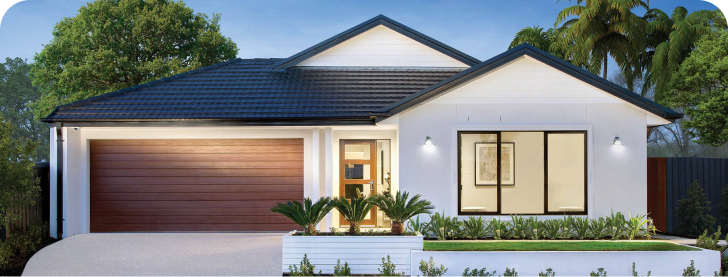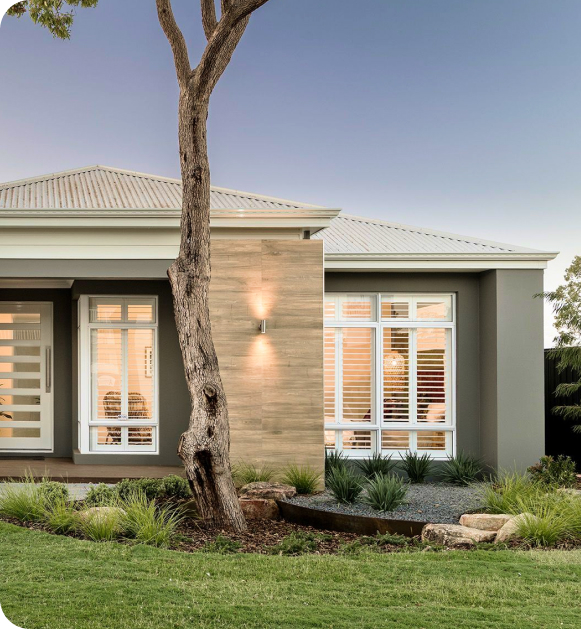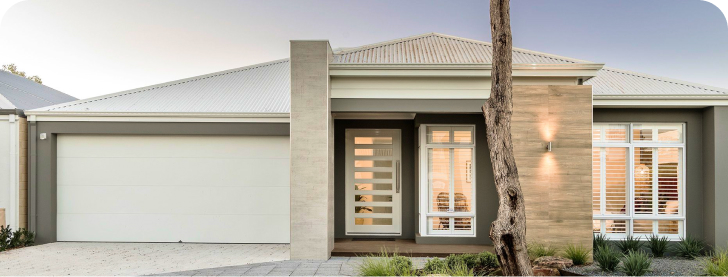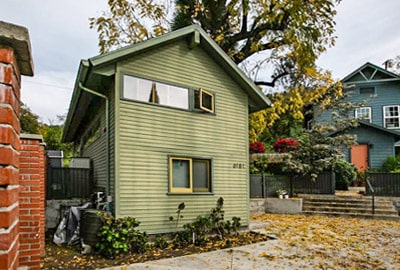
Accessory dwelling units are considered one of the most affordable housing options. This is one of the main reasons for their popularity today. People choose to build ADU to create additional living space for a relatively small amount of money. They can also be built quite simply and quickly on a land plot, which is another advantage.
Despite the current prevalence of affordable housing units, few people know that these secondary suites have a long history and were built by people already several centuries ago. Are you surprised that ADU is not a modern solution? Continue reading this article to find out more information about how accessory dwellings appeared and how their construction changed depending on the historical era.
Accessory apartments were popular in ancient civilizations. As we know, previously, people could survive by hunting and farming. In many communities, peasants built small wooden houses right on the plots on which they kept a vegetable garden. At the same time, there could be a main house where rich people lived on the same lot. The construction of affordable units was also common among owners of the residences as they needed to create a living area for their servants who lived with them, but it was unacceptable that people of different classes shared the same house.
ADUs are popular not only in the USA but also in Europe. Europeans have created additional space for some time with the help of the construction of accessory dwelling units. While earlier people built ADUs in different cities of Europe to house family members, over the past few decades, more and more often, the main reason for planning accessory units in the neighborhoods is the need for homeowners to earn extra money. Europeans often rent out their additional space (both attached and detached ADUs) to tourists or young people who have come to the city to study or work there.
Thus, owning an accessory dwelling unit is now a popular source of passive income within European communities. Due to the peculiarities of residential premises in Europe, which are quite different from America, ADUs may not be so common. This is easy to explain by the fact that in Europe, in general, there are not so many individual houses and plots that are privately owned, but accessory apartments are likely to continue to gain popularity.
The period between the 1920s and 1930s is remembered as one of the most dramatic housing crises in U.S. history. At that time, not only was there no government program, thanks to which people could buy or rent housing but there were also loopholes in the legislation, because of which people of the lower classes were particularly badly affected. Many people were left homeless because they could not afford either luxury residences or modest workforce housing, as tenants began to ask for rent 25% higher than before.
Hence, there were a variety of housing problems that occurred during the demographic boom allowing ADUs to become extremely popular in the 1920s and 1930s. In these conditions, people had no choice but to start planning and constructing accessory dwelling units. It was much more affordable to rent or buy small spaces built on the same land plot where the main house stood.
As you may have noticed, any major upheavals, especially wars, almost always lead to financial crises and, as a consequence, housing crises in the country. The Second World War was no exception. In addition to the need for housing for the ordinary population, there was an urgent need for temporary housing for the military, as well as those who returned from the war and were left without everything or fled Europe. And again, there was no better solution to all these housing problems than an accessory dwelling unit.
However, it was after the Second World War that the zoning regulations tightened up a lot, so it was until the 1970s and 1980s that secondary suites began to gain popularity.
During this time period, the housing market collapsed due to the 18% interest rate on mortgages. At the turn of the 1970s and 1980s, real estate sales fell by 50% compared to previous years. The next time the level of housing sales reached the previous level and even overcame the previous indicator only after 1995.
It is not surprising that in conditions of unstable real estate costs and mortgage rates, most people could not afford to buy a new property. At this time, people who needed housing got by without material support and ways of financing. As a result, the only way to create a new space was to build an accessory dwelling unit. ADU won in many ways: an affordable price, a fast construction process, the opportunity to increase the value of your property, as well as to rent and sell the unit in the future.
Therefore, the time period between the 1970s and 1980s was one of the ADU booms in USA history.
Previously, there were strict zoning regulations that did not allow people to change the boundaries of their property or build additional buildings on their land. During the Second World War or in 1960, there was a strict ban on the construction of accessory units, but people continued to do it illegally because they had no other way out. Moreover, nowadays, there is the problem of housing shortage again. This is due to the fact that many houses are occupied by single seniors, while landlords propose occupancy restrictions on potential tenants. The cost of a detached house may be absolutely crazy in popular states such as California. The construction of a so-called granny flat rightly seemed and still seems to be the most affordable and profitable solution in these situations.
Fortunately, the government has since begun to understand that there is nothing wrong with allowing the population to provide themselves with affordable housing, so there have been zoning changes. In numerous cities, some new laws governing ADUs have been created, so now you can contact the American Planning Association and receive permission to build an ADU.
We have already mentioned in this article that an ADU has always been one of the most affordable housing options; therefore, choosing an ADU instead of buying a full-fledged house allowed people to reduce costs. By constructing a carriage house (or coach house), you can also avoid recalculation of property taxes, which is important for the majority of property owners.
Many people mention another advantage of accessory dwelling units – their sustainability. In fact, you are creating a whole community that lives on one plot of land so that less territory is populated and fewer construction materials are required.
Last but not least, many eco-friendly solutions for ADUs are now being offered, such as obtaining energy with the help of solar batteries located on the roofs.
Throughout the history of the existence of ADUs in many communities, political, economic, social, and cultural factors have influenced the increase in the popularity of granny flats.
We have already mentioned historical factors, so now we will focus on current trends affecting the spread of ADUs:
Nowadays, many want to move their elderly parents to live with them, but a small single-family home does not usually allow this. In this case, an ADU becomes an excellent option for the life of retired persons. Staying in a small house, they should not worry about the fact that its maintenance will take a lot of time and effort. In addition, they can count on the help of any other family member living on the same plot.
Thus, ADUs play a key role in making multi-generational living not just possible but also extremely comfortable.
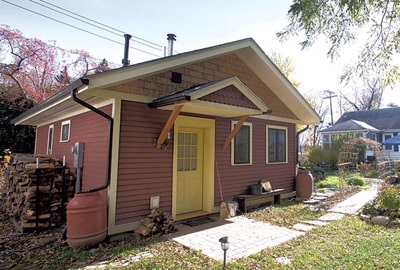
Changes in the local laws of many states that took place recently and created favorable conditions for their construction indicate a promising future for ADUs. While families are getting bigger, and the number of affordable separate housing does not have time to increase as rapidly, we can expect that accessory units will become more and more popular.
In addition, as practice shows, local communities only benefit from the fact that additional units are being built in their neighborhoods. For example, the more accessory units in the area, the more tourists are attracted there, so the area becomes more developed and richer in general.
Turning back to history, it can be noted that the main feature of ADUs that made them a truly iconic form of housing is housing affordability. When the situation in the housing market was unstable, the low cost of accessory dwelling units allowed a huge number of people to still buy or rent them. Another feature of secondary suites is that they allow you to create a tight-knit community and maintain the trend for multi-generational cohabitation. For example, to provide seniors with living space on the same plot of land where you live.
While one of the main advantages of an ADU is the low construction cost, one of the major drawbacks is the huge amount of paperwork that you will have to face before starting construction. The construction of accessory dwelling units is associated with numerous zoning rules and other requirements, as well as the need to obtain building permits.
Despite the long history of a carriage house in the country, most of the time, it was illegal to build an ADU on one’s property. Fortunately, recently more and more laws have been introduced allowing the construction of accessory units, including in California. This form of housing has been fully legalized throughout the state only since the beginning of 2017. Gradually, similar laws are being introduced in other states and cities.
Both an ADU and a guest house are additional spaces that can serve as temporary or permanent homes for your family member or acquaintance. However, unlike guest houses, all accessory dwelling units have their own bathroom and kitchen, so an ADU is the most independent type of additional accommodation.



